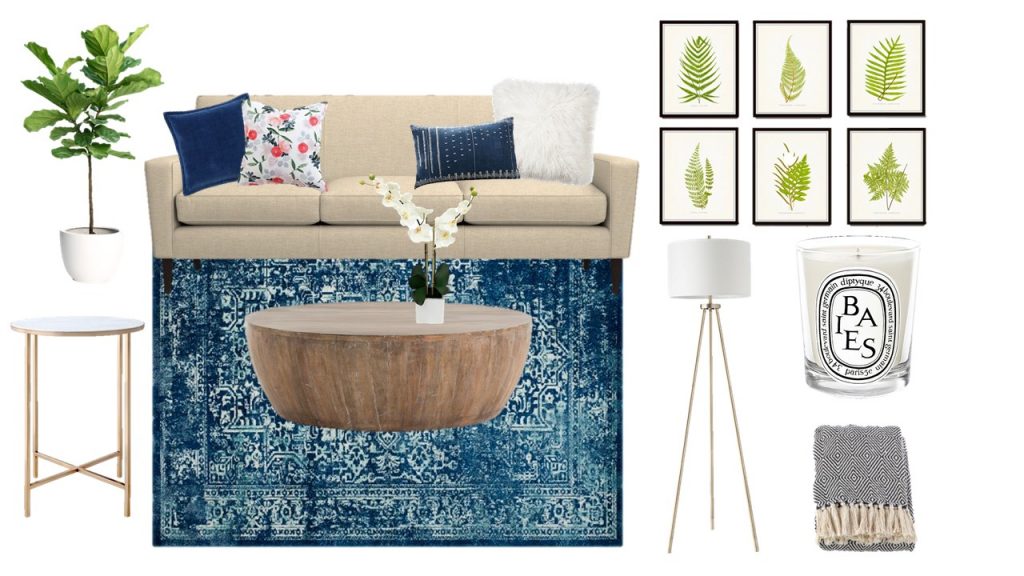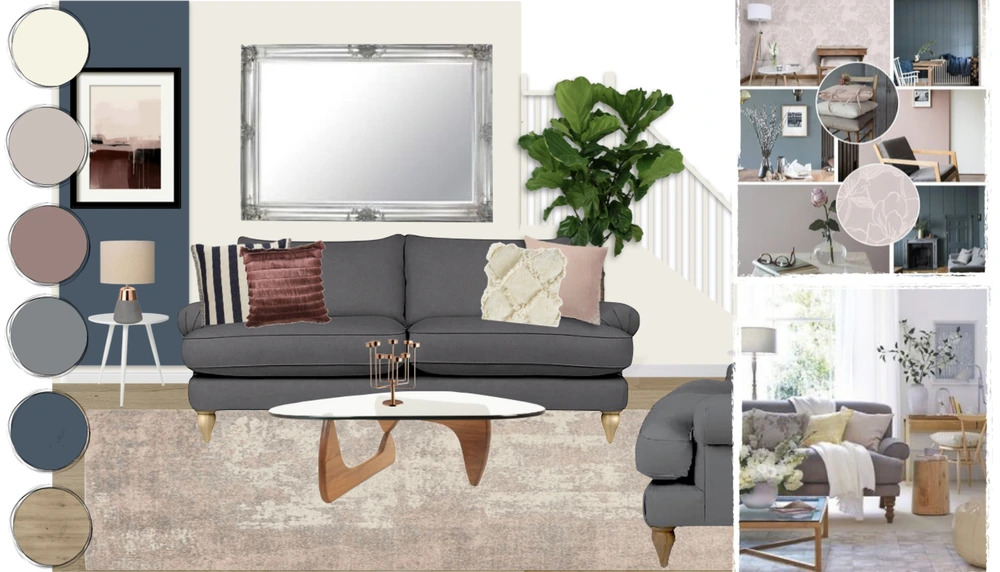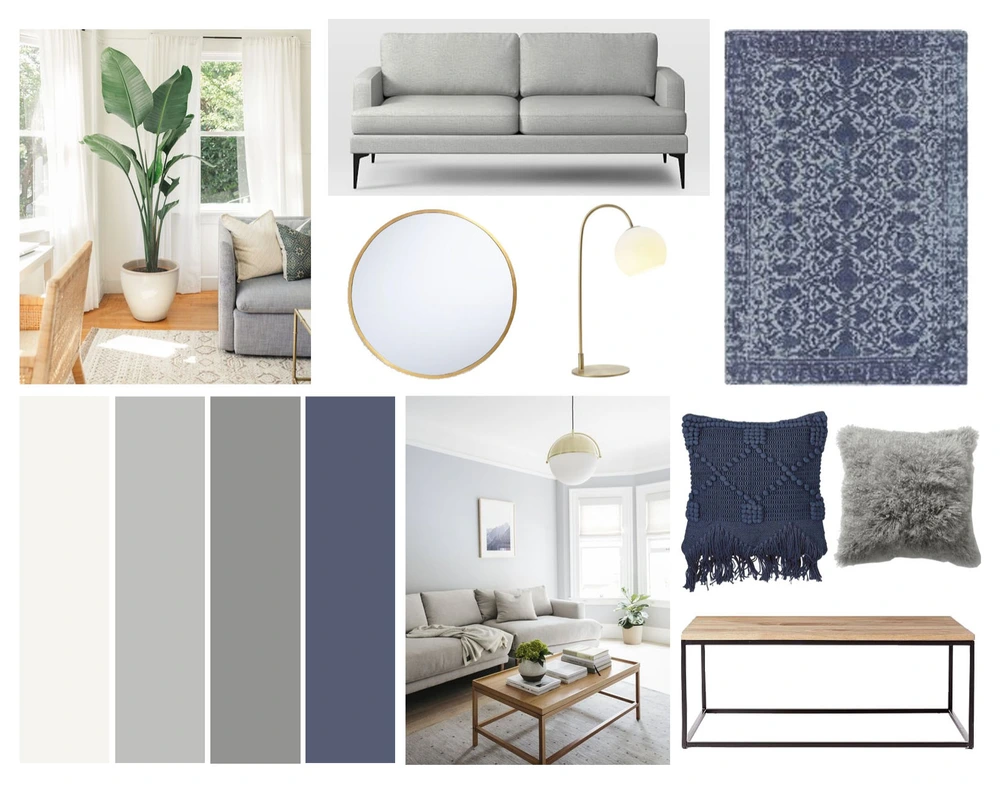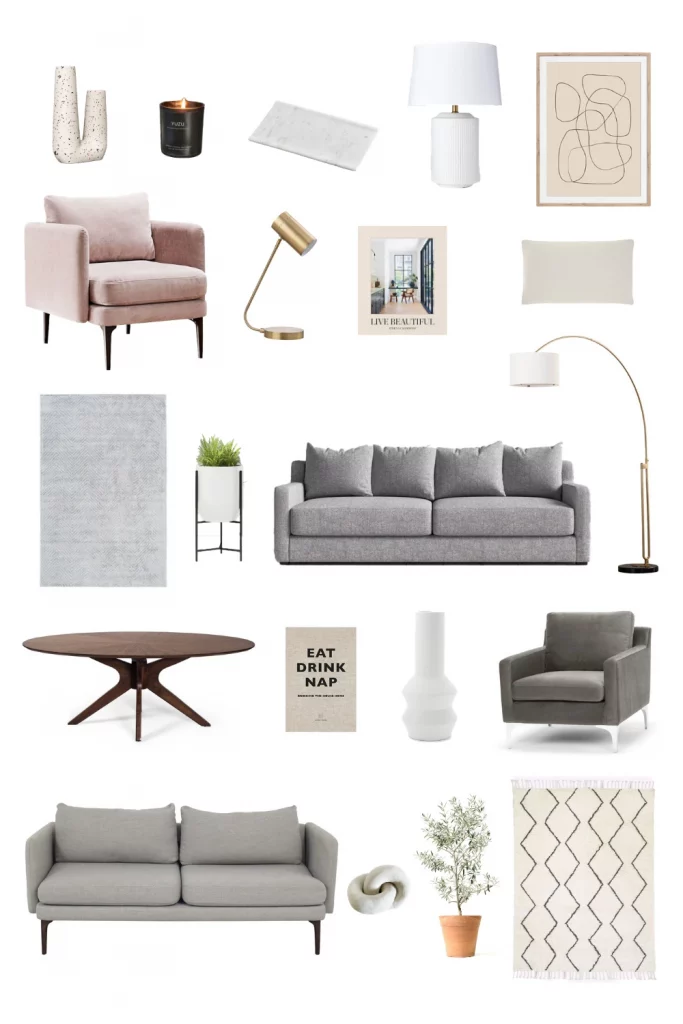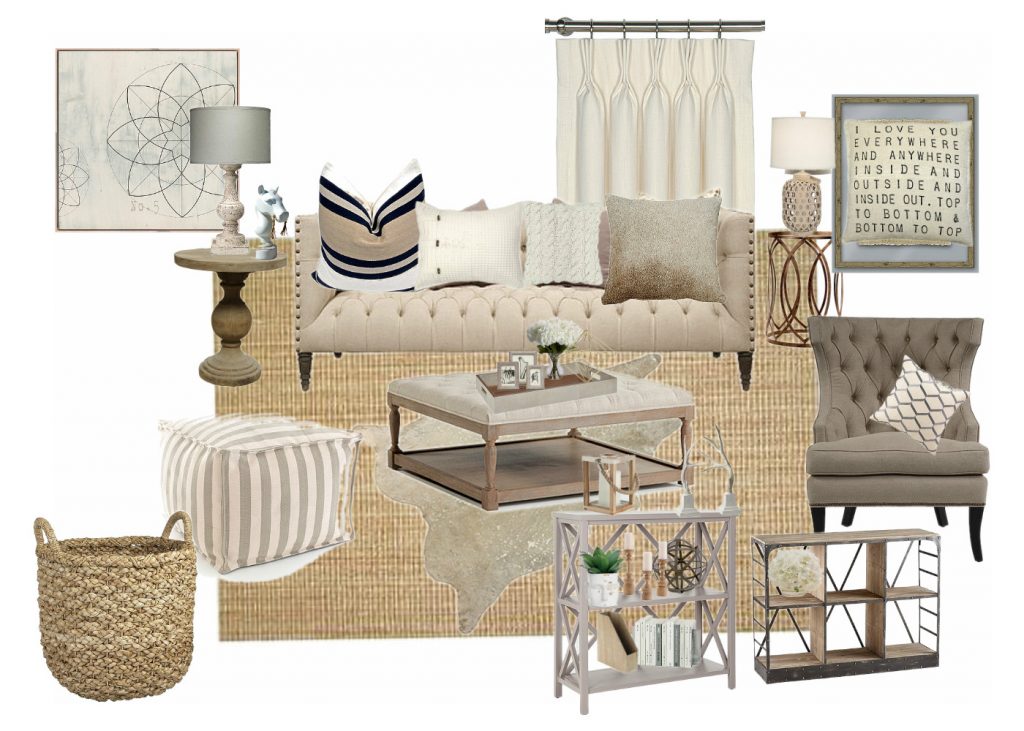Living Room Mood Board Design
Starting a new interior design project can be challenging. You might feel confused and directionless. That’s where a mood board comes in as a saviour by helping you understand the overall feel of the project.
Making a living room mood board shouldn’t be a headache anymore. Creating the perfect mood board for a living room depends on understanding the client’s tastes and preferences.
This blog will show you how to create a living room mood board without any hassles. Thus, you’ll be able to satisfy your clients and make your life easier.
Suggested Read: 14 Pro Tips to Create Mood Boards for Interior Design
Image Credit: lucyengwell.designpalpro.com
Things to Keep in Mind While Making a Mood Board for Living Room
1. Mood boards are not the ultimate commandments
A mood board is not a definitive guide for the overall aesthetic of a project. Instead, mood boards are an early phase since they primarily aim to convey a sensation or emotion through visual imagery and written text.
Thus, your mood board isn’t the last word. It gives you a starting point and helps to understand the overall mood and feel of the project.
2. A psychological exploration of a client
When the client loves your design idea, it’s time to throw a party. However, getting approval from the client isn’t an easy job. You need to understand their tastes to come up with the perfect feel for their living room design.
It is possible when the customer’s preferences and requirements have been considered. To begin, there is a good chance that the customer will not approve of the solutions that you suggest. In order to better understand the customers’ preferences, you need to go the additional inch (or yard).
The designers have to find out specifics such as the client’s favourite colours, the chosen furniture style (for example, neoclassical or ultramodern), the sort of art they like, the textures they appreciate, the optimum lighting levels, and so on.
Knowing about the client’s profession and hobbies can help a lot. For instance, a mathematics professor might want a sombre touch to their living room. However, a pop singer or musician might go with something fancy. And a sportsperson might want something different altogether.
The most challenging aspect of doing design work for a client is figuring out how to communicate their vision in a way that can be physically realised in the final product.
Also, Read: 14 Best Living Room Interior Design Ideas
3. Formatting
The formatting of your mood board is as crucial as its content. Will your mood board be online? Then make sure it doesn’t get too cluttered. But if it’s an offline mood board, you can include some extra details.
4. Construct items around a giant image
Whether the mood board is digital or real, the arrangement should emphasise the most significant theme imagery. Then you can surround these with smaller pictures that support and enhance the concept.
It is a form of subconscious manipulation. When someone sees a prominent image on a mood board, they will instantly have questions about it and scan the rest of the board fast to find answers. When smaller supporting pictures are placed around a bigger image, they can answer these issues by explaining the meaning communicated by the larger image.
5. Involve sense of touch
It’s crucial for designers to not restrict themselves creatively while creating a physical mood board. Historically, foam board was the material of choice for mood boards. Cutting it up using a scalpel and then spray mounting cut-out photos onto it might be a pain (particularly for those who lack dexterity with a blade). But it can be a useful presenting tool.
Despite its seeming antiquity, this practice may be a powerful tool for designers. The expressive power of what is being conveyed is amplified by the tangibility of the images that have been cut out and placed onto boards. Be cautious to ensure you don’t cut yourself!
Quick Read: 10 Best Mood Board Apps and Software for Interior Designers
Image Credit: houzz.com
9 Best Tips to Create Your Living Room Mood Board Design
1. Seek new vistas: Broaden the horizons
It is important to us that the customers feel involved in the process. Thus, you should try to choose photos together with them. However, before carrying out this activity, You have to collect dozens of photographs from a variety of resources. They include things that are popular at the moment, things that are hip, things that are current, photographs of naked people, images that are special to our sector, and so on.
In addition, you can provide some abstract images that aren’t so popular. The trigger is a saboteur working behind the scenes to change the course of the project.
In this phase, you should stay prepared to explain your viewpoint to the client. The key to having a satisfied client is clear communication.
Suggested Read: Importance of Mood Boards In Interior Design
2. Budgetary constraints
It is important for designers to be aware of their customers’ budgetary constraints and make every effort to accomplish their job within those constraints. It is only natural for designers to put together components of the most excellent quality to create a polished and appealing environment.
However, if high-end materials are employed in the makeover, the price tag might easily balloon out of control. Consequently, if a renovation is stopped in the middle of the process, the finished product can look far worse than the environment before the renovation began.
3. Create a mood board to investigate and eliminate unproductive thoughts
Designers may be overflowing with concepts at the outset of a new project. Sometimes they’ll have a strong preference for a single theory. However, they wouldn’t be able to tell if that’s the greatest option.
Moodboards are a cheap and easy method to test out different concepts and see what sticks and what doesn’t. Because of this, designers shouldn’t be reluctant to come up with a number of different versions of their mood boards to determine which one works best. They shouldn’t be afraid to kill off ideas that aren’t working, even though they seemed like the best option at the time.
Whether designers are working on a high-profile project with many stakeholders or on their own pet projects, creating a moodboard may be an essential stage in the process.
They let designers to experiment with concepts without making a substantial financial or time commitment, and they help get everyone on the same page before diving into more intricate design work.
Suggested Read: Difference Between Mood Board and Concept Board
Image Credit: pinterest.com
4. Incorporating a mood board into one's pitch
In most cases, mood boards are created independently from the actual presentation or pitch. They can be read alone to get insight into the intended tone or atmosphere. That’s how most people do it. But you may also include them in your pitch or presentation if you want to.
Using sly, visually-implied tactics to get your point through to a customer is frowned upon. One technique to effectively convey ideas to a customer is to incorporate a mood board within the presentation itself, rather than adding it as an afterthought. That will also help you convey your ideas easily.
5. Showcasing one's own mood board
Along the same lines, if your mood board is going to be given to the customer, you should make an effort to be part of the presentation yourself. It can be harmful to allow anything that was conceived in your brain to be transmitted by someone else since it might result in the meaning being confused as it happens in a game of Chinese whispers.
6. Not tensing up
When a customer feels pressured into going with a specific aesthetic, it’s not a good idea to lock down a concept or style in a mood board. It’s best to include a bit of wiggle room in all your plans so that nothing seems too set in stone.
Watermarks won’t be a problem for designers utilising stock images for previews. Reminding everyone that these are only suggestions and that everything is still up for grabs might be helpful.
Suggested Read: How To Create A Bedroom Mood Board Design?
Image Credit: whitelanedecor.com
7. Attempt to evoke some sort of feeling in the reader
When presenting a mood board to a customer, it might pay off to go beyond the box. The individual must contemplate what might elicit a heartfelt reaction. For this purpose, real-world things work well.
Designers should display a shell if they were motivated by thoughts of the seashore. Those who had their “eureka!” moment on the train are expected to provide their ticket as proof. Such things have the potential to arouse curiosity, which in turn might elicit the desired emotional response.
8. Never give away the farm upfront
No pre-show emails to the board are permitted; presentations must be made in real time.
Avoid the situation where a well-intentioned project manager sends an offline mood board to the client in advance of a presentation, giving them a sneak peek at the work in progress.
Clients should not create a judgment on a mood board shown offline before the designers have had an opportunity to communicate their idea; otherwise, they will come prepared with lots of questions.
9. Reduce waiting time for customer approval
If done properly, a mood board may provide the customer with all the information they need to approve a project.
No longer are mood boards reserved for sales presentations. Preparing mood boards throughout a project is recommended prior to developing final images. Most designers have heard the words “I’ll know it when I see it” from a customer after completing a project.
This feedback may be devastating since it means the designer must go back to the drawing board. Designers may prevent this by soliciting input at various points in the process using mood boards.
Also, Read: 15 Best Tips To Create A Kitchen Mood Board Design
Create Your Living Room Mood Board With Foyr
Foyr is a brand-new Mood Board maker that has gained enormous popularity among Beta users thanks to its simple UX. The company is also offering a 30-day money-back guarantee and a 50% discount this new year! Doesn’t that sound exciting?
Foyr gives designers access to more than 250 templates, all of which may be altered to suit the individual’s vision better. Items from over fifty high-end furniture companies are available for drag-and-drop assembly onto the predesigned layout.
By allowing clients to independently approve smaller design aspects incubated in the mood board, it is possible to improve cross-functional collaboration with the designs.
Designers have the freedom to choose their own colour palette and remove the background as they see fit thanks to the extensive editing tools. What more do you want? Start creating the best living room mood board for your client.
FAQs
1. What is a mood board in Canva?
Canva lets you create mood boards using readymade templates. However, you can add text, images, and other design elements according to your convenience.
2. How to create a physical mood board?
You can use foam or any other material. Start by cutting it to the desired size. Now paste the images and texts on it. Make sure you leave enough space between the different elements to avoid cluttering.
3. Can you create mood boards for personal projects too?
Yes, you can create mood boards for personal projects too. They help in organising your thoughts and work systematically.









